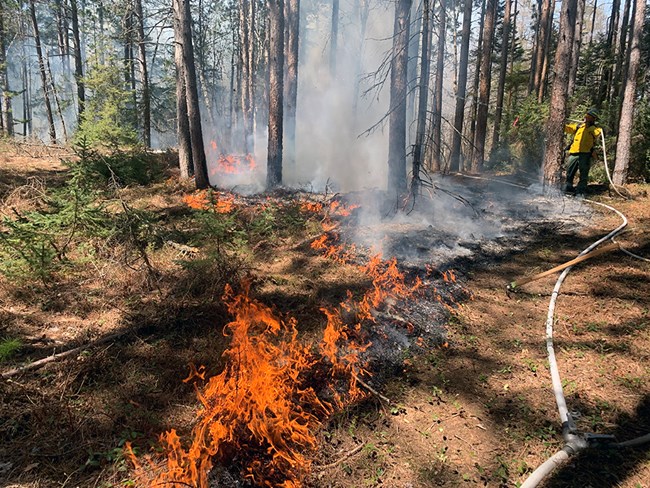Article
Stockton Island Prescribed Burn Restores Cultural Landscapes

NPS/Cooper
The National Park Service (NPS), in collaboration with the Bureau of Indian Affairs (BIA) and Tribal partners, conducted a 19-acre prescribed burn on Stockton Island (Wiisaakodewan-minis) on May 12, 2021 for vegetation management and to restore cultural landscapes. In 2017, Apostle Islands National Lakeshore collaborated with the Red Cliff Band, Bad River Band, and other Great Lakes Indian Fish and Wildlife Commission member Tribes to conduct the first cultural burn on Stockton Island in many generations, acknowledging the wisdom and cultural practice of using fire (ishkode) within this rare ecosystem.
“It is critical that we recognize the importance of traditional ecological knowledge as we steward these islands, which are within the ceded territories of the Ojibwe people,” said park superintendent Lynne Dominy.
Objectives of the prescribed cultural fire include restoring globally imperiled pine barrens habitat, with an emphasis on increasing blueberry (miin) production. “Generations of Anishinaabe harvested blueberries on islands within the archipelago. Accounts of families picking berries tell of camping and coming together to harvest; they also tell of fire. Along with other forest species, blueberries respond positively to fire. Knowing this, local Ojibwe tribes used fire to promote the harvest on Stockton Island for centuries. This relationship between humans and fire helped shape the Ojibwe culture that still utilize these islands today,” said Damon Panek, the park’s Ojibwe education specialist.
Cultural burns take Traditional Ecological Knowledge, which is a deep knowledge of a place that has been painstakingly discovered by those who have adapted to it over thousands of years, in combination with proven science to fulfill collective goals of wise stewardship. While cultural fire is an annual goal at Apostle Islands, it is not always possible due to national fire staffing needs as well as local weather. Park staff are mindful to implement cultural fire during seasonal windows that are consistent with traditional practices.
Interagency fire specialists completed the 19-acre prescribed fire on the northern end of the Stockton tombolo, a sandy peninsula-like feature, to reduce vegetation including encroaching shrubs and trees, promote the growth of blueberries and other native plant species, and improve wildlife habitat. Pile burning of accumulated wood debris was also completed at the Raspberry and Michigan Island light stations.
